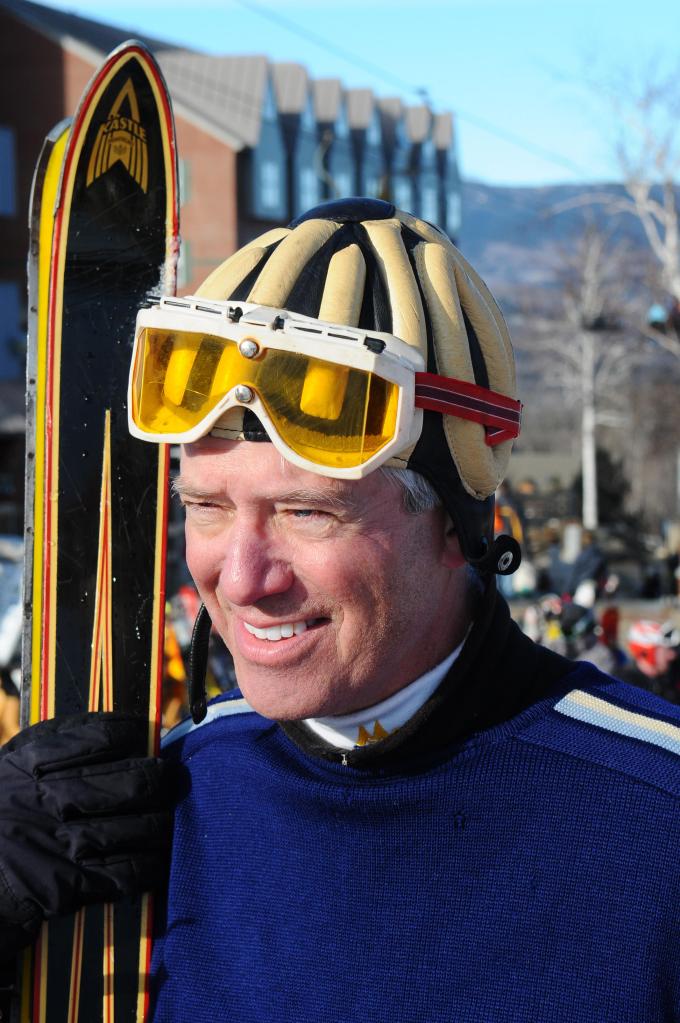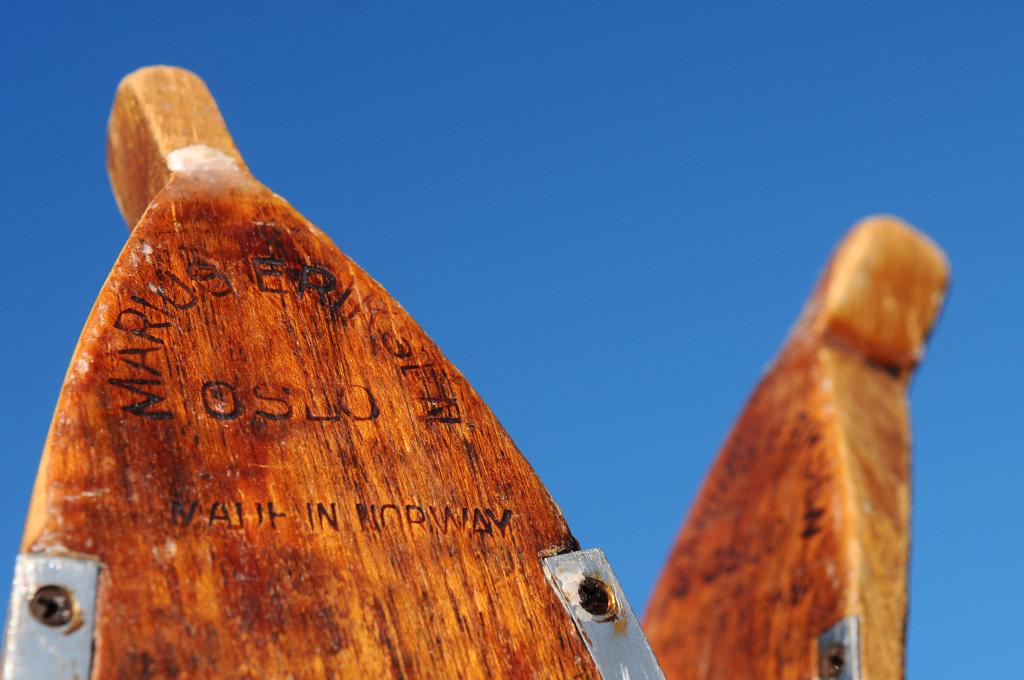Portland ski instructor Theo Johnsen was one of the first Maine advocates for Alpine fun. And it’s interesting to note that in 1905, Johnsen called the skis made a century and a half before him “clumsy and awkward.”
“Tradition tells us that the skee or sliding snowshoe … proved a heavy load to fasten to one’s feet and keep in motion,” Johnsen wrote in his 1905 ski manual about what came before.
Johnsen was an entrepreneur and skiing legend. He is our Alpine forefather.
But make no mistake, the man had little understanding of “a heavy load.”
Let me tell you.
As the Ski Museum of Maine’s annual heritage day at Sugarloaf showed this year, the skis worn during Johnsen’s day were a wicked heavy load.
We’re talking weigh-your-feet-down-like-concrete-blocks heavy.
So dense you can’t turn your skis for fear of snapping your ankles.
And yet once a year at the Ski Museum’s Heritage Classic, the museum members embrace the old, the cold, and the seriously heavy by following the hickory-weighted ways of a century ago. Museum board member and historian Glenn Parkinson has an endless collection that he uses to suit up those curious and strange enough.
In fact, for the past three years Parkinson has assembled a collection of willing risk-takers to put on these weighted skis that have no ankle support, no safety features and no good way to turn.
These planks clamp on your feet, weigh them down, and don’t come off.
Then Parkinson’s unknowing army suits up in wool pants, Norwegian sweaters and useless 80-year-old goggles to participate in a parade and champion a mutual love of our ski heritage.
And each year, Parkinson enthusiastically leads his band of costume-clad jokers down the beginner trails to smirks, wisecracks and the wonderment of weekend skiers.
“You all are crazy,” said Chaney Fletcher, 32, of Carrabassett Valley at this year’s parade on Feb. 13.
“I tried on my dad’s old equipment just for fun on the last three runs of the day… My ankles were free floating and basically stuck in something like a cast. And the skis are a lot longer, and way heavier.”
Vlad Formanek of Boston smiled warmly at the gear. Despite a season-ending injury, the older snowboarder liked the idea of skiers who are used to modern gear forcing turns in the old stuff.
“They’re so much heavier,” Formanek mused.
But as some at the ski classic can tell, the days before groomers and parabolic skis are worth remembering, because the essence of sailing down a snowy pitch was the same.
“I truly love skiing on vintage equipment. It is a reminder of what the sport used to be,” Parkinson said. “It is also a reminder perhaps not to take ourselves too seriously. You can’t ski on equipment over 70 years old if it is important to look good. It helps ask the question, why do we ski?”
Parkinson’s skis from 1924 were made by Tubbs in South Paris, a well-known dealer of the day. But with just a toe loop for a binding they were not meant to turn.
Supposedly his 1936 set has boots that also were made in Maine at Bass, with a so-called “featured instep strap for tighter fit and more control at speed.”
Some in his party knew better.
Like Mike Jamison, who had on a pair of 1930s wooden skis – not much different from the ones he wore as a kid in 1962 when his father opened Spring Mountain in Spring Mount, Pa. The last time Jamison skied on wooden skis was 1966.
“They don’t ski like modern skis. You can’t get out of them. I almost killed myself,” Jamison said.
Of course, the snowy trails were different in the days before groomers, a little rougher, too, like the skis.
And as hard, weighted, dangerous and crazy as they were, the wooden skis provided a glimpse – for everyone who used them – of the way it was.
For some, maybe even the way life should be.
“Right now an average day on a groomed trail at the Camden Snow Bowl was the one day a year when the snow was perfect back then. Now we take it for granted. Now we have that every day,” said museum director and ski author John Christie, 74.
“We used to always be cold. It was all wool pants. Then we didn’t know any alternative.”
Staff Writer Deirdre Fleming can be contacted at 791-6452 or at:
dfleming@pressherald.com
Send questions/comments to the editors.





Success. Please wait for the page to reload. If the page does not reload within 5 seconds, please refresh the page.
Enter your email and password to access comments.
Hi, to comment on stories you must . This profile is in addition to your subscription and website login.
Already have a commenting profile? .
Invalid username/password.
Please check your email to confirm and complete your registration.
Only subscribers are eligible to post comments. Please subscribe or login first for digital access. Here’s why.
Use the form below to reset your password. When you've submitted your account email, we will send an email with a reset code.